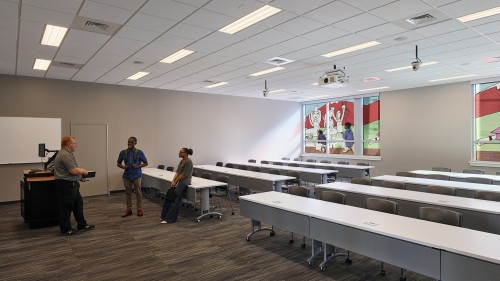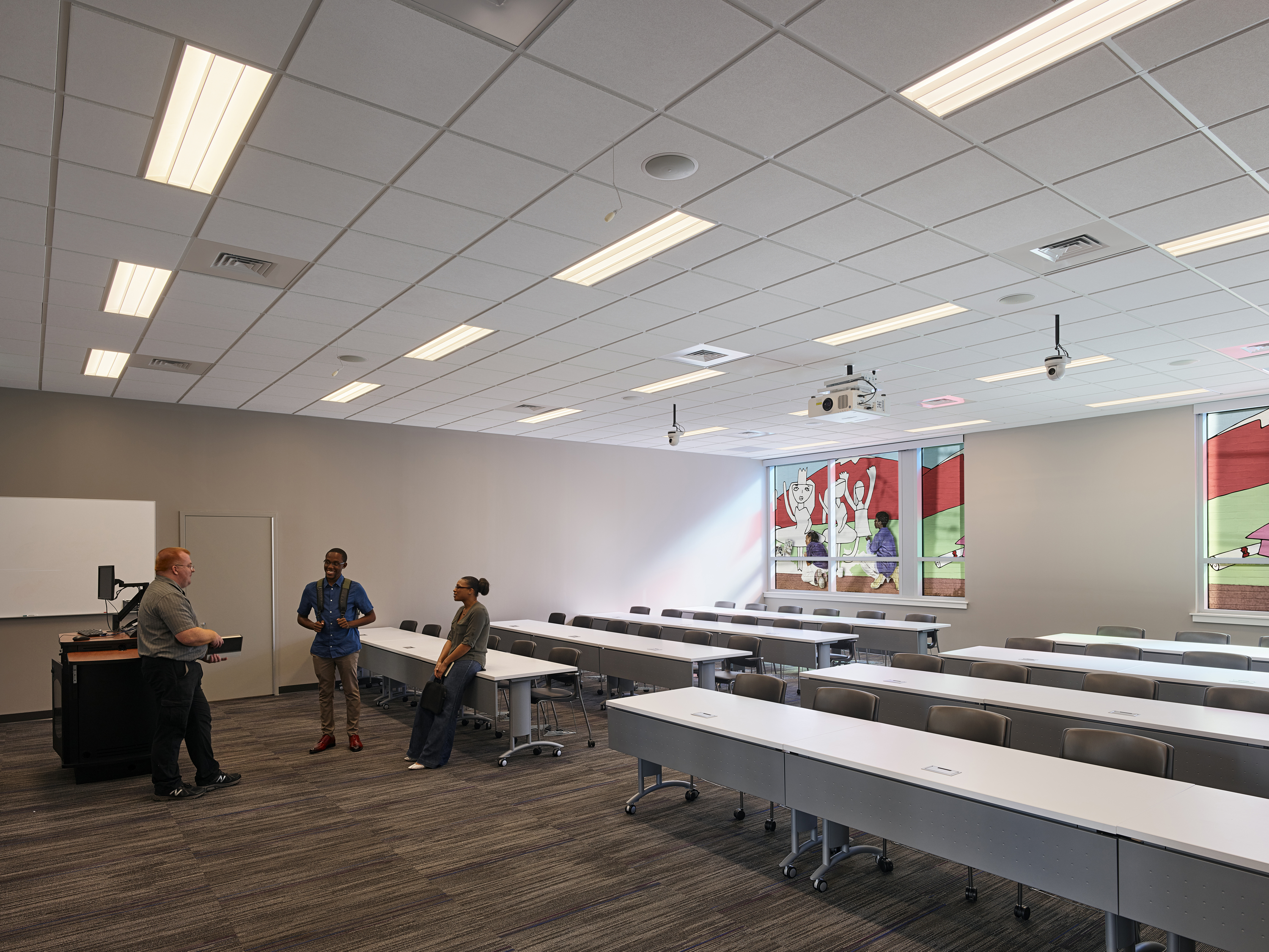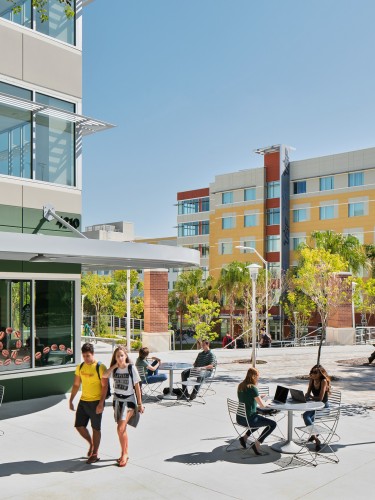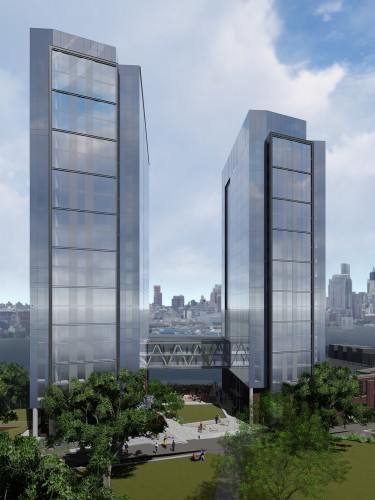
Typing ‘pandemic’ and ‘higher education’ into a search engine results in a smattering of words like ‘uncertainty,’ ‘impact,’ and ‘crisis.’
If we had to choose one theme to sum up this entire Design in Times of COVID series, it might certainly be that of uncertainty. We’ve found ourselves skeptical of PDFs touting ‘best practices,’ or firms who attempt to convince us they have everything figured out in regard to post-pandemic processes and responses. In this spirit of ambiguity, both Design Collective and Brailsford & Dunlavey have focused their advising and current client work on providing options to our partners, focusing on the could instead of the should.
In our final installation of Design in Times of COVID, we opt to focus on the human element of education, namely academics and operations. What we’ve found is that the Pandemic has created an opportunity for colleges and universities to revisit what they stand for, and by revisiting their roots, they may find themselves pushed toward a more successful future.
“The biggest misconception is that the Pandemic is disastrous for higher education,” says James Vigil, Senior Associate at Brailsford & Dunlavey. Vigil goes on to explain that COVID-19 has created significant challenges for higher education, but may also provide a “much-needed and long-overdue” function, forcing higher education to look inward and evaluate itself holistically, paying careful attention to how it delivers services and courses and how it can improve delivery methodologies to be more effective, less expensive, and more flexible. As architects and advisors, we have referred multiple times to how we have relied on the underpinnings of our organizations during times of uncertainty; now universities must do the same. By grounding their actions in the foundations of their institutions, whether it be accessible education, innovative thinking, or personal growth, the mission of each university will drive the future of both the campus and its operations.
Schools are just starting to announce their projected interactions with students for the fall semester: some opting to keep students completely off campus, others allowing students on campus until Thanksgiving [1], some using hybrid learning models, others allowing students onto campus but running only online courses [2]. The hope is that decisions made are true to each organization’s mission, such that institutions make it through the next few years as successfully as possible, and continue to flourish longer-term. So far, we know one thing is absolutely true - as schools prioritize accessibility, likely resulting in a temporary expansion of online delivery of instruction, they risk focusing less on the in-person learning experience.
If the concept of e-courses sounds familiar, it’s for good reason; online and mass accessibility of education and college-level courses is a concept with over a decade of chatter. MOOC, an acronym for Massive Open Online Courses, was coined in 2008 [3] when this platform of education sought to provide ‘access for all at low cost.’ MOOCs’ educational impact fell flat, sparking headlines like, All Hail MOOCs! Just don’t ask if they actually work [4] and Inflated Expectations, Early Disappointments [5]. Online report cards from the Wall Street Journal and the New York Times gave ‘convenience’ an A, but ‘teacher-to-student interaction’ a D [6], enforcing that MOOCs were a less-effective option than in-person education. And indeed our professional realizations and observations have shown physical classrooms can be catalysts for change, and student life facilities can spark community, growth, and belonging. As we witness many schools moving to online class delivery - even temporarily - we must caution them not to fall into the same pitfalls that MOOCs made apparent. As of yet, nothing replaces in-person education and learning with peers. Schools should also realize that middle ground between online delivery and in-person engagement exists; retrofitting classrooms can enhance hygiene with transparent dividers, anti-microbial surfaces, or new arrangements that build in required distancing. In short, rethinking the physical space can keep in-person engagement and education as a real option even in the short-term for information delivery.
For the next couple of years, online instruction has the potential to reduce operational costs like cleaning and sanitizing classrooms and lecture halls, while other costs related to health and safety, and to training for staff may increase. In this interim, resources will need to be reallocated to accommodate the shift in the demand paradigm - something good in a time of volatility. Regarding volatility, admissions numbers may stagger, and tuition pricing models may fluctuate, perhaps on a tier system, as some students may pay for an ‘in-seat experience’ and others pay only for ‘online.’ This will certainly result in multiple budget scenarios, which ultimately means higher education institutions will do best if they establish a decision-making framework and create a toolbox that can respond to whatever they decide, whenever they decide it.
Indeed, Vigil explains that B&D has been working with clients to “create multiple operating scenarios” based on various reopening plans. This approach supports short-term decision-making related to operational re-opening adjustments and financial impacts/recovery, while still allowing schools to focus on the long-term impacts that come from these quick-fix decisions.
COVID has created an opportunity for institutions to look closely at how they operate, how they should operate, and how they need to operate for the time being.
This forced self-study can allow institutions to identify opportunities for a sustainable business model that may increase access to education without sacrificing intellectual impact and a sense of community from in-person engagement. More than ever, holding fast to values and a long-term vision will be key.
[1] https://www.nbcboston.com/news/coronavirus/colleges-reveal-plans-for-fall-semester-reopening/2141159/
[2] https://www.insidehighered.com/news/2020/06/09/colleges-continue-announcing-plans-fall-amid-pandemic
[3] https://www.mcgill.ca/maut/currentissues/moocs/history
[4] https://nation.time.com/2013/09/12/all-hail-moocs-just-dont-ask-if-they-actually-work/
[5] https://blogs.wsj.com/cio/2013/12/27/moocs-inflated-expectations-early-disappointments/
[6] https://www.nytimes.com/2013/04/21/opinion/sunday/grading-the-mooc-university.html


